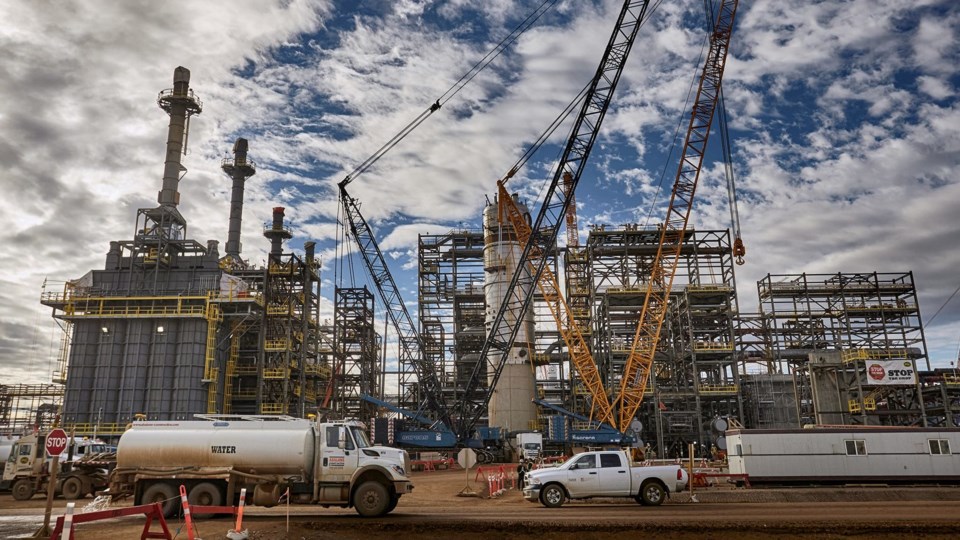Unlike neighbouring British Columbia, which projected a $4.2 billion deficit in its February 28 budget, Alberta’s provincial budget expects a healthy surplus over this fiscal year.
High oil and gas revenue and robust post-pandemic recovery are leaving Alberta with a surplus of $2.4 billion forecast for 2023-24, the provincial government announced this week.
United Conservative Party (UCP) Finance Minister Travis Toews tabled the Alberta budget on Tuesday, February 28, which highlighted the province’s new fiscal framework and focuses on healthcare and public safety.
The fiscal plan, which was tabled 90 days before the scheduled spring election and is Premier Danielle Smith's first budget, will see spending grow by just under 4 per cent.
After years of reigning in spending, the province will be investing a record $24.5 billion into health care, an increase of 4.1 per cent from 2022.
In an embargoed news conference, Toews said former UCP government did the “heavy lifting” when it came to cutting spending and now the government is able fund priorities important to Alberta.
“Right now we are really facing an affordability challenge that’s been unprecedented in recent time,” Toews said.
And while the province is sitting in a better fiscal position than it has in years past, the government will be introducing legislation to require balanced budgets, except for under exceptional circumstances.
The total revenue for the province is estimated to be $70.7 billion, which is $5.4 billion lower than the forecast for the year. Expenses for the province were higher than originally anticipated— agreements, such as the new Alberta Medical Association (AMA) contract, accounted for some of the increase.
Goodbye, deficits
The new fiscal framework has been designed with a balanced budget as a requirement, ensuring “sound fiscal management for the long term.” Toews said the framework prioritizes debt repayment and saving for the future.
The UCP plans to table a bill this spring that would only allow the province to run a deficit if revenue dropped quickly and suddenly.
The province can post a deficit if the cost of a disaster is bigger than the contingency funds the province set aside, if revenue is more than $500 million lower than expected or if Alberta is involved in a legal settlement that would require a large payment.
The new framework sets out rules for using surplus cash to pay down debt as it matures. In 2022-23, $13.4 billion of maturing debt was repaid using surplus cash and $1.4 billion is expected to be repaid in 2023-24 .
The remainder of surplus is expected to be put into a new $1.4 billion “Alberta Fund,” which could be spent in the new fiscal year starting April 1.
Toews said the Alberta Fund was intended to “create discipline” with any surplus funds, with a priority of savings and debt repayment.
Surplus included in the fund could be used to pay off debt, add more funds to the Heritage Savings Trust Fund, or used toward one-off affordability payments or capital projects.
Toews acknowledged that “times remain tough” for many Albertans due to inflation. The budget includes inflation relief funding of $2.4 billion, which includes $238 million per year for post-secondary education students.
The government will also be indexing personal income taxes to inflation and fully pausing the collection of the 13-cent provincial fuel tax until June 30, 2023.
More than $820 million has been allotted for the next three years to help school boards prepare for enrolment growth. An additional $1.5 billion in learning support will be spent in 2023-24 to help children with specialized learning needs and hire up to 3,000 education staff.
Another $414 million will be spent over the next three years to reduce rural school bus ride
times and provide support to drivers to offset rising training costs.
Oil and gas revenue
Oil and gas revenue is continuing to boom in the province. Revenue reached a record $68 billion high in 2021-22. As oil and gas prices remained high, the province reached a new record of $76 billion in revenue this year.
The province’s overall revenue is expected to remain above $70 billion in following years, with a forecast of $71.7 billion for 2024-25.
Non-renewable resource revenue is estimated to be $18.4 billion in 2023-24, down from the highest-ever resource revenue of $27.5 billion forecast in 2022-23.
Debt ratio below 30 per cent
Toews pledged to keep the province’s net debt-to-GDP ratio below 30 per cent, which he achieved this year, with a debt of 10.2 per cent in 2023-24, an increase from the 9.9 per cent previously projected.
The government used $13.4 billion to pay down provincial debt in 2022-23 and is planning to pay down another $1.4 billion in 2023-24. Debt servicing costs are expected to hit $2.8 billion in 2023-24.
Taxpayer-supported debt outstanding is estimated to total $79. 7 billion at the end of 2022-23 and $78. 3 billion at the end of 2023-24.
Public safety
The UCP have invested $1.3 billion toward public safety and emergency services to support community policing, Alberta sheriffs, supporting Indigenous policing, and combatting human trafficking.
As well, $27 million dollars will be spent on hiring more than 200 Alberta Sheriffs to enhance highway patrols, courtroom security, and public safety initiatives.
Additional spending
Health care funds will be split, with more than $2 billion going toward the strengthening and modernization of the primary health care system, $4.3 billion toward continuing care, community care and home care, while $237 million over 3 years will go toward the Alberta Surgical Initiative capital program. $148 million will go toward mental health and addiction resources.
The capital plan for 2023 includes $6.5 billion for municipal infrastructure; $3 .5 billion for capital maintenance and renewal; $3 .1 billion for health facilities; $2 .3 billion for roads and bridges; $1 .6 billion for schools; $1 .1 billion for agriculture and natural resources; and $3 .2 billion for other capital plans.



